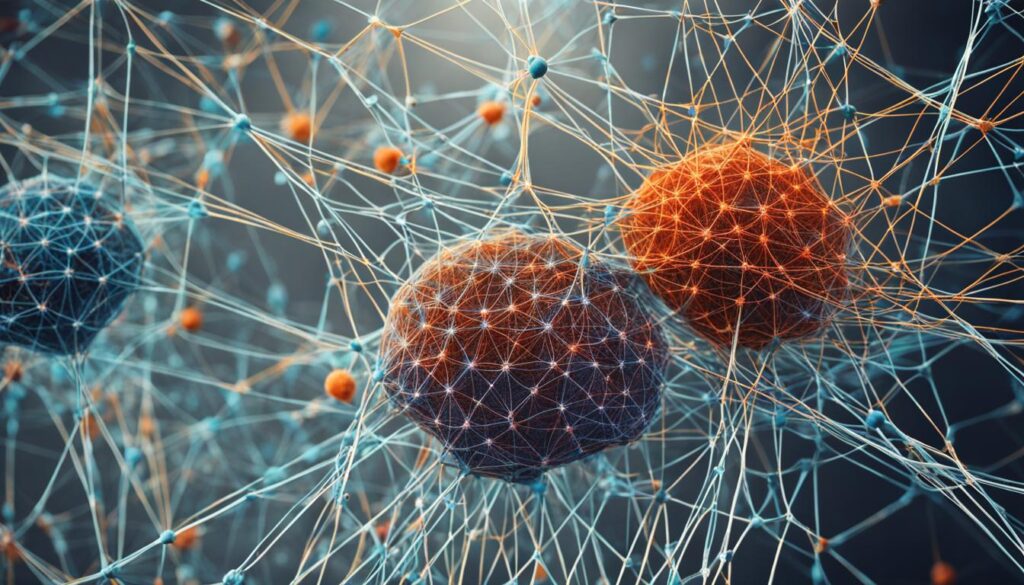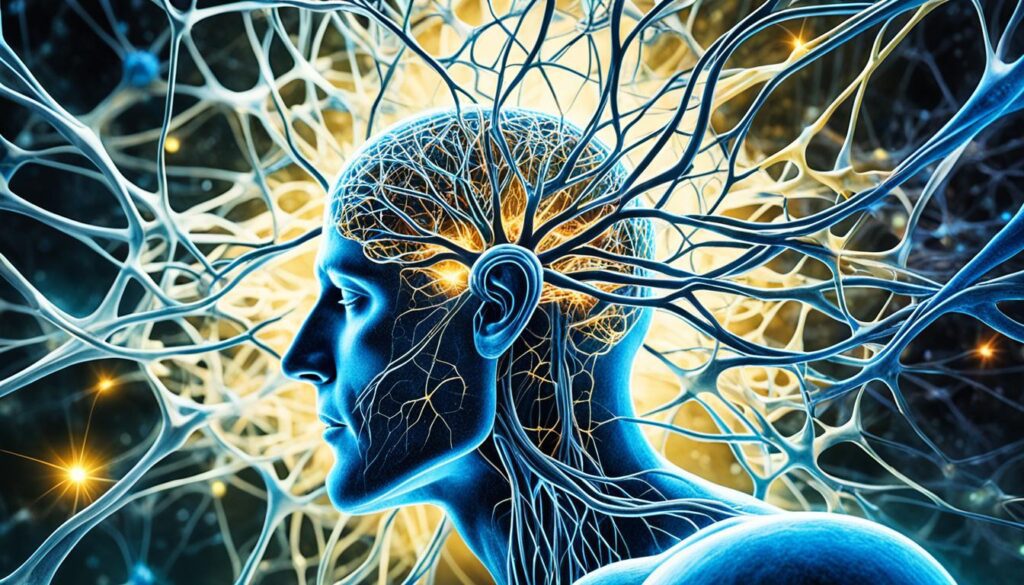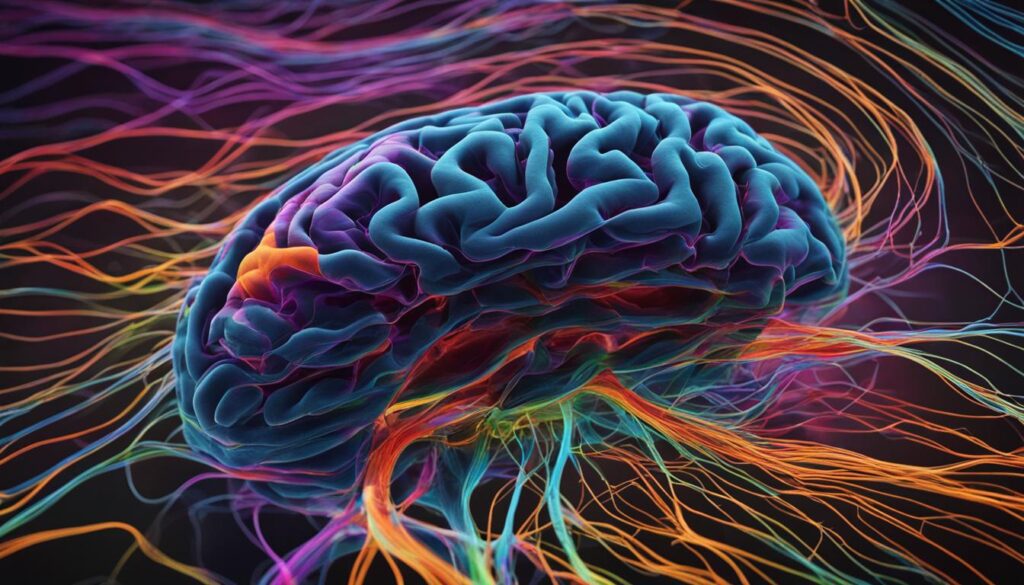Exploring the Depths of Consciousness – A Guide

Embarking on the exploration of consciousness invites us to dive into the depths of our inner workings and unlock the mysteries of our own awareness. Comprehending consciousness is more than a scientific pursuit—it’s a journey towards understanding the very essence that animates our existence. From the fleeting thoughts that flutter through our minds to the profound self-awareness that defines our sense of being, consciousness is the tapestry that weaves together our subjective experiences with the objective world.
This guide serves as a beacon for those who wish to navigate the intricate realms of consciousness, illuminating the various theories and debates that seek to unravel its enigma. By recognizing the nuances of understanding consciousness, we venture into a domain that bridges the gap between empirical inquiry and philosophical introspection. At its core, consciousness is the hallmark of the human experience, presenting an intellectual challenge that has perplexed thinkers and scientists alike for centuries.
As we embark on this profound exploration, we invite readers to open their minds to the possibilities that an in-depth guide on consciousness can offer. Through the lenses of both materialistic and metaphysical theories, we will examine the origins, nature, and implications of the conscious state, and how it enables us to interact with the world. This guide not only aims to educate but also to inspire a deeper appreciation for the complexities and wonders of human cognition.
Key Takeaways
- Consciousness encompasses our perceptions, thoughts, and emotions, forming the basis of our subjective reality.
- The investigation of consciousness bridges science and philosophy, outlining materialistic and metaphysical perspectives.
- Understanding consciousness is a multifaceted challenge, combining empirical research with philosophical debate.
- An exploration of the consciousness guides us through the enigma of our inner experiences and the world around us.
- This guide offers an insightful journey into the depths of awareness, promising to deepen our grasp on the quintessence of human experience.
- The nature of consciousness remains one of the most formidable puzzles in understanding the essence of what it means to be human.
Understanding Consciousness
Delving into the theory of consciousness opens a profound inquiry into the nature of human existence. At the crux of this exploration is the quest to discern the intricate relationship between the state of consciousness, subjective awareness, and our vivid perceptions. The enigmatic character of consciousness presents both a profound mystery and a compelling area of study, where multiple theories strive to explain its essence.
The Enigma of Subjective Experience
The enigma of consciousness lies in its elusive nature, where experiences are inherently subjective and difficult to quantify. The problem of consciousness prompts us to inquire: What mechanisms underlie the transition from the electrical and chemical firings within our brains to the rich tapestry of subjective awareness? The answer seems to dwell in the complex interplay between our sensory experiences and the interpretation of these perceptions, ultimately shaping our individual realities.
Materialistic vs Metaphysical Theories
Debates within the philosophical and scientific communities have led to contrasting approaches to explain consciousness. Materialistic explanations posit consciousness as an emergent property of neuronal activity, suggesting a direct correlation between the intricate neural network of the brain and the emergent states of conscious awareness. In opposition, metaphysical concepts challenge this view by proposing the existence of a universal consciousness, a boundless field that transcends the limitations of our individual minds and the physical structures that supposedly house them.
| Materialistic Theories | Metaphysical Theories |
|---|---|
| Based on the premise that physical processes such as neuronal activity are fundamental to consciousness | Consider consciousness to be an intrinsic part of the universe, independent of physical entities |
| Emphasize brain structures and functions | Focus on the concept of consciousness as a primordial aspect of reality |
| Suggest consciousness can be explained by current or future scientific understanding | Often include perspectives that defy conventional scientific methodology |
Fascinatingly, these contrasting viewpoints not only fuel academic and scientific discussion but also further the nuanced discourse surrounding the concept of consciousness. Whether as an emergent phenomenon of our biological intricacies or as a fundamental component of the cosmos, the quest to understand consciousness continues to inspire and provoke thought across the spectrum of intellectual pursuit.
The Science Behind the Conscious Mind
The neural correlate of consciousness (NCC) underpins our quest to understand the essence of human awareness. The NCC refers to the specific systems of neural activity that correlate with the rich tapestry of our conscious experiences. Diving into this subject reveals two compelling scientific frameworks: Integrated Information Theory (IIT) and Global Workspace Theory (GWT). Both approaches offer intriguing perspectives on the underpinnings of consciousness, yet their interpretations diverge in meaningful ways.

IIT suggests that consciousness mirrors the level of information integrated across a network of neurons rather than being a mere product of isolated neural activities. This supports the idea that higher-order information processing in the brain correlates with the depth of conscious experience.
In contrast, GWT paints a different picture—it conceptualizes consciousness as a global space facilitated by diverging yet connected neural circuits. This ‘workspace’ allows for the assembly and accessibility of information, which are critical for cognitive operations requiring conscious attention.
Through the lens of these theories, the science of consciousness seeks to decode not just where and how consciousness manifests but also why particular consciousness patterns are associated with certain neural architectures and activities.
| Criteria | Integrated Information Theory (IIT) | Global Workspace Theory (GWT) |
|---|---|---|
| Focus | Information integration | Information accessibility |
| Key Concept | Phi (Φ), a measure of system’s integration | Global workspace broadcasting neural signals |
| Neural Basis | Whole brain network | Specific brain regions’ synergy |
| Conscious Experience | Quality and quantity of integrated information | Conscious vs. Unconscious process threshold |
Consciousness in Philosophical Thought
Within the expansive domain of the philosophy of mind, the hard problem of consciousness presents a formidable challenge that intersects the realms of science and philosophical thought. The exploration of this concept serves as a testament to the enduring quest for the explanation of consciousness, a journey that traverses the boundaries between observable phenomena and subjective experience.

Defining the Hard Problem of Consciousness
The enigma of the hard problem of consciousness revolves around a central question—why does the processing of information in our brains result in an internal subjective experience, or phenomenal consciousness? Despite the rigorous scientific study of consciousness, this question lingers, evoking intense debate and contemplation in the study of consciousness.
Philosophy’s Impact on the Scientific Study of Consciousness
Philosophy’s role is not just in questioning but also in guiding. By casting a critical eye on the mechanisms of consciousness, philosophical thought has deeply influenced consciousness research. It is through this blend of philosophy and empirical investigation that the scientific study of consciousness has unearthed profound insights—ones that may have remained hidden without the interplay between these disciplines.
| Philosophical Concept | Impact on Scientific Inquiry |
|---|---|
| Subjective Experience | Introduces a complex layer of study, beyond objective measurement |
| Dualism vs. Physicalism | Fuels debate on whether consciousness is purely a physical manifestation |
| Intentionality and Phenomenology | Shapes the approaches to understanding the directedness and quality of mental states |
| Free Will and Conscious Agency | Raises questions about decision-making and autonomy in conscious beings |
Techniques for Measuring Consciousness
The complex pursuit of measuring consciousness is continuously refining and developing, bridging the gap between subjective experience and quantifiable science. Advanced brain imaging techniques have emerged as the frontrunners in this quest. Among the most prominent methods to explore the correlates of consciousness are functional Magnetic Resonance Imaging (fMRI) and Electroencephalography (EEG). These tools have profoundly progressed our ability to observe and interpret neural activity patterns that are associated with conscious experience.
Functional MRI stands out due to its high spatial resolution, which enables the detailed mapping of blood flow changes in the brain as a proxy for neural activity. This non-invasive technique provides pivotal insights into the areas of the brain that are involved in conscious processing. On the other hand, EEG offers excellent temporal resolution, capturing the dynamic electrical activity of neurons with precision over milliseconds. The combination of these methods presents a more holistic view of the workings of the conscious mind.

However, relying solely on brain imaging might overlook the subjective aspect that is intrinsic to consciousness. Therefore, these imaging results are often complemented by behavioral assessments and self-reported experiences. Together, they allow for a more encompassing approach to studying the elusive nature of consciousness.
| Technique | Focus Area | Resolution Type | Application in Consciousness Research |
|---|---|---|---|
| fMRI | Blood flow & Brain activity | Spatial | Locating regions associated with conscious thought & awareness |
| EEG | Electrical activity of neurons | Temporal | Tracking real-time processing and temporal dynamics of consciousness |
| Behavioral Assessments | Observable responses | N/A | Correlating subjective reports with brain activity for comprehensive understanding |
The implications of these innovative approaches extend beyond academic curiosity. They have significant clinical applications, aiding in the assessment of patients with disorders of consciousness and informing treatments. As the field continues to advance, the fusion of technology and nuanced understanding of consciousness promises to reveal deeper layers of the human experience.
Consciousness and the Human Experience
At the heart of the human experience, consciousness and emotions are inextricably connected. The rich tapestry of feelings that course through our daily lives are not just ephemeral states but are rooted in the very fabric of our cognitive and emotional existence. Through the conscious mind, we experience a symphony of emotions that define our interactions with the world and ourselves.

The Interplay of Emotions Within Consciousness
The palette of human emotions colors our every encounter, driven by the release of neurochemicals that shape our feelings of pleasure, attachment, and even aversion. The warm rush of dopamine during moments of joy, the comforting embrace of oxytocin when connecting with loved ones, and the jolt of stress hormones in times of adversity contribute to the complexity of our emotional lives. This dance of molecules plays a critical role in the emotional dimension of consciousness, influencing the way we perceive and engage with the world around us.
The Role of Perception in Conscious Experience
Perception acts as the gatekeeper of consciousness, curating the continuous stream of sensory information that floods our awareness. It is through perception that we navigate our environment, parse out relevant details for decision-making, and attain self-reflection. Our ability to introspect heightens our awareness of internal states and aligns our cognitive abilities with the demands of any given situation. Perception not only molds our understanding of the world but also underpins our capacity for self-awareness, allowing us to ponder over our personal motivations and experiences.
| Neurochemical | Emotional Influence | Role in Conscious Experience |
|---|---|---|
| Dopamine | Feelings of pleasure, reward, motivation | Enhances goal-oriented behaviors and positive emotional states |
| Oxytocin | Attachment, social bonding, trust | Fosters connections with others and social recognition |
| Cortisol | Stress, anxiety, fear | Prepares the body for a fight-or-flight response |
In summary, the interplay between our emotions and consciousness forms an integral part of what it means to be human. Together, they craft a rich narrative of the human condition, punctuated by profound feelings, intricate perceptions, and the constant flux of being that defines our existence.
Conclusion
The intricate nature of consciousness continues to captivate the collective imagination, prompting an expansive exploration into the essence of human existence. Subsuming a spectrum of subjective experiences, consciousness forms an integral part of what it means to be. Percolating through the intellectual fibers of both scientific study and philosophical inquiry, consciousness beckons a perennial debate about its very essence. Cognitive processes coming to the fore in this discourse underscore the complexity and richness of this fundamental human trait.
Summarizing Consciousness
From the initial probing into the nature of consciousness to the panoramic views that now characterize contemporary understanding, it’s clear that this field melds multidimensional aspects of life. The contributions of consciousness studies are profound, offering glimpses into the core of self-discovery and enhancing recognition of the interconnectivity that defines consciousness experiences. As we lean into the wealth of knowledge borne out of these studies, we begin to appreciate the profound interconnectedness embedded within the tapestry of life.
The Continuing Journey of Consciousness Exploration
Evolving consciousness studies fortify our grasp on the sublime journey of self-awareness and discovery—a journey without a discernible terminus yet bountiful with knowledge and growth. Continuing exploration ushers an expansion of perspectives, engendering transformative shifts in our sense of self and place amidst the myriad of existence. It’s clear that the philosophical debate intertwining with empirical research fuels an ever-unfolding narrative of what it means to be consciously alive. Thus, as we delve deeper, we unravel more of the enigmatic yet enriching experiences life has to offer.
FAQ
What is the definition of consciousness?
Consciousness is the state of being aware, encompassing subjective experiences such as perceptions, thoughts, emotions, and self-awareness. It enables individuals to experience reality and interact with the external world.
How do materialistic and metaphysical theories explain consciousness?
Materialistic theories of consciousness argue that it is an emergent property of the complex neuronal interactions within the brain. In contrast, metaphysical theories suggest that consciousness goes beyond the physical brain, proposing the existence of a universal consciousness field.
What are Integrated Information Theory and Global Workspace Theory?
Integrated Information Theory (IIT) proposes that consciousness arises from integrated information processing within neural networks. Global Workspace Theory (GWT) suggests that consciousness emerges from the coordinated activities of certain brain regions that create a global workspace for information assimilation and access.
What is the “hard problem” of consciousness?
The “hard problem” of consciousness refers to the challenge of explaining why and how physical processes in the brain produce subjective experiences or phenomenal consciousness. It is a central question in the philosophy of mind that remains unresolved.
How has philosophical thought impacted the study of consciousness?
Philosophical thought provides critical analysis and insights into what consciousness is and the mechanisms behind it. This perspective has deeply influenced scientific approaches, helping to shape empirical research and broaden the understanding of consciousness.
What techniques are used to measure consciousness?
Techniques used to measure consciousness include brain imaging technologies like functional magnetic resonance imaging (fMRI) and electroencephalography (EEG), as well as behavioral assessments and self-reported experiences. These methods help to analyze neural activity patterns and explore the correlates of consciousness.
How are emotions related to consciousness?
Emotions are an integral aspect of consciousness, deeply influencing our awareness and perception of the world. Emotional experiences, such as love and hate, involve the release of neurochemicals and activation of specific brain regions that shape our conscious experience.
What role does perception play in conscious experience?
Perception is a fundamental component of consciousness, as it processes sensory information to help us navigate and understand the world. It involves mechanisms such as selective attention, introspection, and the evaluation of personal thoughts and emotions.
What is the theory of consciousness?
The theory of consciousness relates to the study and understanding of the nature of consciousness, encompassing various perspectives and ideas about the essence of awareness and subjective experience.
What is the concept of consciousness?
The concept of consciousness refers to the awareness of internal and external existence, including thoughts, sensations, feelings, and perceptions, giving rise to the experience of being conscious.
What are specific theories of consciousness?
Specific theories of consciousness encompass diverse approaches, such as dualism, idealism, materialism, and panpsychism, each offering distinct insights into the nature of consciousness.
What are the correlates of consciousness?
Correlates of consciousness pertain to the neural activities and systems associated with conscious experiences, serving as indicators of the underlying mechanisms of awareness.
What is the stream of consciousness?
The stream of consciousness refers to the continuous and dynamic flow of thoughts, perceptions, and emotions within an individual’s mind, as described in psychological and literary contexts.
What are the features of consciousness?
The features of consciousness encompass aspects such as intentionality, unity, reflexivity, and selectivity, contributing to the multifaceted nature of conscious experiences.
What is machine consciousness?
Machine consciousness pertains to the theoretical concept of artificial systems possessing consciousness or self-awareness, often debated in the context of artificial intelligence and philosophy of mind.
What are neuronal correlates of consciousness?
Neuronal correlates of consciousness refer to the neural activities and structures associated with specific conscious experiences, offering insights into the biological underpinnings of awareness and perception.
What is the level of consciousness?
The level of consciousness represents the degree of awareness and responsiveness exhibited by an individual, varying from states of deep unconsciousness to full alertness and self-awareness.
What is human consciousness in terms of philosophy?
Human consciousness in terms of philosophy encompasses various discussions about the nature, origins, and attributes of human consciousness, extensively addressed in philosophical inquiries and the Stanford Encyclopedia of Philosophy.






